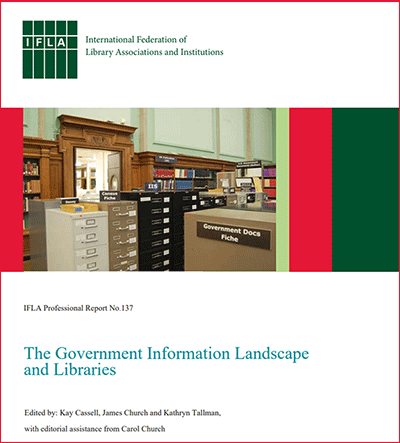Tag: government documents
Primary source: Public Housing, Racial Policies, and Civil Rights
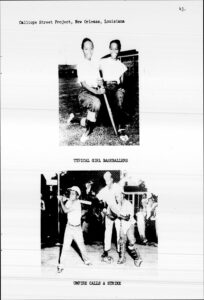 Public Housing, Racial Policies, and Civil Rights: The Intergroup Relations Branch of the Federal Public Housing Administration, 1936-1963 includes directives and memoranda related to the Public Housing Administration’s policies and procedures. Among the documents are civil rights correspondence, statements and policy about race, labor-based state activity records, local housing authorities’ policies on hiring minorities, court cases involving housing decisions, racially-restrictive covenants, and news clippings. The intra-agency correspondence consists of reports on sub-Cabinet groups on civil rights, racial policy, employment, and Commissioner’s staff meetings.
Public Housing, Racial Policies, and Civil Rights: The Intergroup Relations Branch of the Federal Public Housing Administration, 1936-1963 includes directives and memoranda related to the Public Housing Administration’s policies and procedures. Among the documents are civil rights correspondence, statements and policy about race, labor-based state activity records, local housing authorities’ policies on hiring minorities, court cases involving housing decisions, racially-restrictive covenants, and news clippings. The intra-agency correspondence consists of reports on sub-Cabinet groups on civil rights, racial policy, employment, and Commissioner’s staff meetings.Primary Source: FBI Files on Martin Luther King, Jr.

Full text access to the FBI’s file on the assassination of Martin Luther King, Jr. is available on the GALE platform. “The 44,000-page case file … documents the bureau’s role in finding Ray and obtaining his conviction. The file also includes background information amassed by the FBI on Dr. King’s social activism.”
Black Freedom Struggle in the 20th Century: Federal Government Records, on the Proquest platform, includes the two FBI files on Martin Luther King, Jr. Part 1
“details the heavy surveillance and painful harassment that J. Edgar Hoover’s FBI directed against America’s foremost civil rights leader throughout the 1960s.” Part 2 consists of verbatim transcripts and detailed summaries of telephone conversations between King and one of his most trusted confidants, Stanley D. Levinson.
Jim Church in print: The Government Information Landscape and Libraries
Librarian for Economics, Political Economy, and International Government Information Jim Church is one of the three editors of the just released IFLA publication The Government Information Landscape and Libraries, which provides case studies on challenges and opportunities for access, preservation and digitization of government information around the world. Jim is also the author of the chapter on international governmental organizations (IGOs), and he provides a terrific overview of this complex and challenging area. As Jim states, “IGO documents and publications often do not show up in Google Scholar or in the Indexing and Abstracting databases that libraries purchase. They are often not cited, or cited poorly.” Yet they are an important, often essential, source for researchers seeking information (numeric and textual) on a wide array of global topics.
We are very fortunate to have Jim’s expertise at Berkeley, and it’s great that it’s now being shared globally through this open access resource!
Susan Edwards,
Head, Social Sciences Division
Social Welfare Librarian & Interim African Studies Librarian
Primary Sources: Resources on South Asia
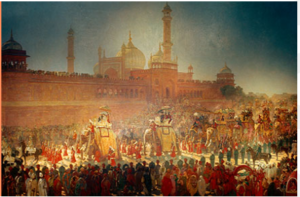 Area Studies: India is a platform for a wide range of digitized archival collections.
Area Studies: India is a platform for a wide range of digitized archival collections.
- Colonial Discourses Series Three – Colonial Fiction, 1712-1933 includes fiction, poetry, drama, and general non-fiction from India, 1712-1933, sourced from the British Library.
- Curzon, India and Empire – The papers of Lord Curzon (1859-1925) from the British Library include correspondence which documents all aspects of his involvement in the Middle East and South Asia.
- The Empire Writes Back: Part One – Indian views on Britain and Empire, 1810-1915, from the British Library is a set of rare volumes, mainly printed in India, describing the experiences of Indians who traveled to Britain, France, and America between 1810 and 1915.
- India During the Raj: Eyewitness Accounts – Diaries and related records describing life in India, 1712-1925.
- India in the Age of Empire – The Journals of Michael Pakenham Edgeworth (1812-1881) from the Bodleian Library, Oxford.
- Indian Newspaper Reports, c. 1868-1942 – These printed reports consist of precis and extracts of articles from hundreds of Indian-language titles and English titles published by Indians, compiled for and published by the Indian government.
The Library recently acquired the following U.S. State Department online archives:
India from Crown Rule to Republic, 1945-1949: Records of the US State Department
India-Pakistan Conflict: Records of the US State Department, 1963-1966 (aka Records of the U.S. State Department: India and Pakistan, Political Affairs and Relations, February 1963-1966, Subject-Numeric File POL)
Pakistan from Crown Rule to Republic: Records of the US State Department, 1945-1949
Primary Sources: Resources on Japan
Another post where I am catching up on resources we’ve acquired or have been informed of in the past year or so.
Japan at War and Peace, 1930-1949: Records of the US State Department Classified Files, which includes
- Records of the Department of State Relating to the Internal Affairs of Japan, 1930-1939
- Records of the Department of State Relating to the Internal Affairs of Japan, 1940-1944
- Records of the Department of State Relating to the Internal Affairs of Japan, 1945-1949
Japanese Censorship Project
“The Library of Congress’ Asian Division has digitized its Japanese Censorship Collection, a unique online archive comprising more than 1,000 marked-up copies of government-censored monographs and galley proofs from the 1920s and 1930s in Japan. The collection, originally from the Home Ministry’s library, reveals traces of the otherwise-hidden censorship process of the Japanese government through marginal notes, stamps, penciled lines and commentary inscribed by the censors’ own hands.”
Fūzoku Gahō
This resource provides online access to a historical journal Fūzoku Gahō which was originally published in Tokyo between February 1889 and March 1916 in 518 issues with over 38,000 articles. It is said that Fūzoku Gahō was the first graphic magazine produced in Japan. The articles published on the journal cover a wide range of subjects, including social and cultural trends and conditions in the Edo, Meiji, and Taisho periods, customs, history, literature, things/objects and affairs, geography, war and disasters.
Note: There is a limit of 4 simultaneous users; if the access is denied, please try again later.
Primary Sources: Immigration and Migration resources
 Border and Migration Studies Online is a collection that explores and provides historical background on more than thirty key worldwide border areas. Featuring at completion 100,000 pages of text, 175 hours of video, and 1,000 images, the collection is organized around fundamental themes associated with border and migration issues, such as border identities, sea migration, maritime borders, etc.
Border and Migration Studies Online is a collection that explores and provides historical background on more than thirty key worldwide border areas. Featuring at completion 100,000 pages of text, 175 hours of video, and 1,000 images, the collection is organized around fundamental themes associated with border and migration issues, such as border identities, sea migration, maritime borders, etc.
Immigration Records of the INS: 1880-1930 covers the investigations made by the Immigration and Naturalization Service (INS) during the massive immigration wave of 1880-1930. The files cover Asian immigration, especially Japanese and Chinese migration, to California, Hawaii, and other states; Mexican immigration to the U.S. from 1906-1930, and European immigration. There are also extensive files on the INS’s regulation of prostitution and white slavery and on suppression of radical aliens.
Primary Sources: Intergovernmental Committee on Refugees: The West’s Response to Jewish Emigration
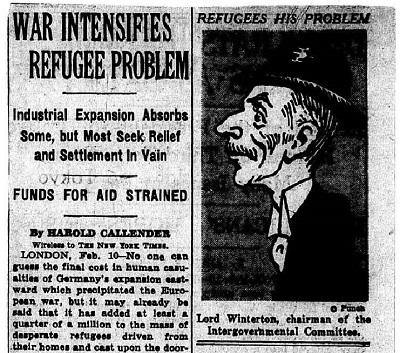 From the publisher’s description: “The Intergovernmental Committee on Refugees (IGCR) was organized in London in August 1938 as a result of the Evian Conference of July 1938, which had been called by President Roosevelt to consider the problem of racial, religious, and political refugees from central Europe…. For the first time, there was discussion on extending protection to would-be refugees inside the country of potential departure, particularly central Europe. The IGCR, however, received little authority and almost no funds or support from its member nations for resettlement of refugees from Europe in countries allowing permanent immigration, and it had little success in opening countries to refugees…. In July 1944, 37 governments participated in the work of the Committee. Of these, representatives of nine countries, including the United States, served on its Executive Committee. The primary responsibility for determining the policy of the United States with regard to the Committee was that of the Department of State. It ceased to exist in 1947, and its functions and records were transferred to the International Refugee Organization of the United Nations.”
From the publisher’s description: “The Intergovernmental Committee on Refugees (IGCR) was organized in London in August 1938 as a result of the Evian Conference of July 1938, which had been called by President Roosevelt to consider the problem of racial, religious, and political refugees from central Europe…. For the first time, there was discussion on extending protection to would-be refugees inside the country of potential departure, particularly central Europe. The IGCR, however, received little authority and almost no funds or support from its member nations for resettlement of refugees from Europe in countries allowing permanent immigration, and it had little success in opening countries to refugees…. In July 1944, 37 governments participated in the work of the Committee. Of these, representatives of nine countries, including the United States, served on its Executive Committee. The primary responsibility for determining the policy of the United States with regard to the Committee was that of the Department of State. It ceased to exist in 1947, and its functions and records were transferred to the International Refugee Organization of the United Nations.”
The Library recently acquired the online archive of the Department of State’s records relating to the IGCR, which reside in the National Archives. More information about the scope and arrangement of the collection is available in the finding aid for the microfilmed edition.
Primary Sources: Japanese American Internment: Records of the Franklin D. Roosevelt Library
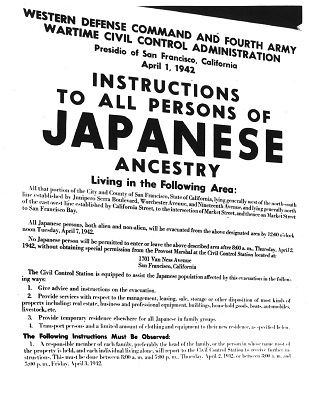 The Library has recently acquired Japanese American Internment: Records of the Franklin D. Roosevelt Library, a digitized collection of materials that were assembled by library staff at the Franklin D. Roosevelt Library. The finding aid for the microfilm version provides more detailed information about what is included in the collection and how it is arranged.
The Library has recently acquired Japanese American Internment: Records of the Franklin D. Roosevelt Library, a digitized collection of materials that were assembled by library staff at the Franklin D. Roosevelt Library. The finding aid for the microfilm version provides more detailed information about what is included in the collection and how it is arranged.
Primary Sources: ProQuest Executive Branch Documents 1933-1942
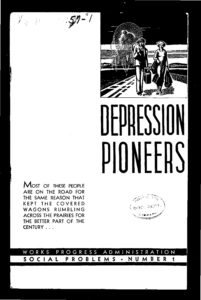 The Library has added Part 2 (19333-1939) and Part 3 (1940-1942) to its acquisition of Executive Branch Documents, accessible through ProQuest Congressional. This resource contains documents produced by federal government departments, agencies, and commissions that were not included in the U.S. Serial Set.
The Library has added Part 2 (19333-1939) and Part 3 (1940-1942) to its acquisition of Executive Branch Documents, accessible through ProQuest Congressional. This resource contains documents produced by federal government departments, agencies, and commissions that were not included in the U.S. Serial Set.
Primary Sources: New Deal and World War II: President Franklin D. Roosevelt’s Office Files and Records of Federal Agencies (1933-1945)
New Deal and World War II: President Franklin D. Roosevelt’s Office Files and Records of Federal Agencies (1933-1945) includes materials deemed especially important by the President on the basis of content and source. Major topics covered in the files are the Great Depression, the New Deal, America’s involvement in World War II, the internal workings of the Roosevelt administration, and Roosevelt’s personal leadership style. Several additional collections include the FBI Reports of the Franklin D. Roosevelt White House; Civilian Conservation Corps Press Releases; Department of Treasury records; and a special set of documentary records on the Roosevelt Presidency covering 50 important episodes and themes of the Roosevelt presidency. Of particular interest are the Records of the Committee on Economic Security, an advisory board tasked by the President to propose measures that would ensure economic security for Americans. It’s final report was the blueprint for what would become the Social Security Act.
